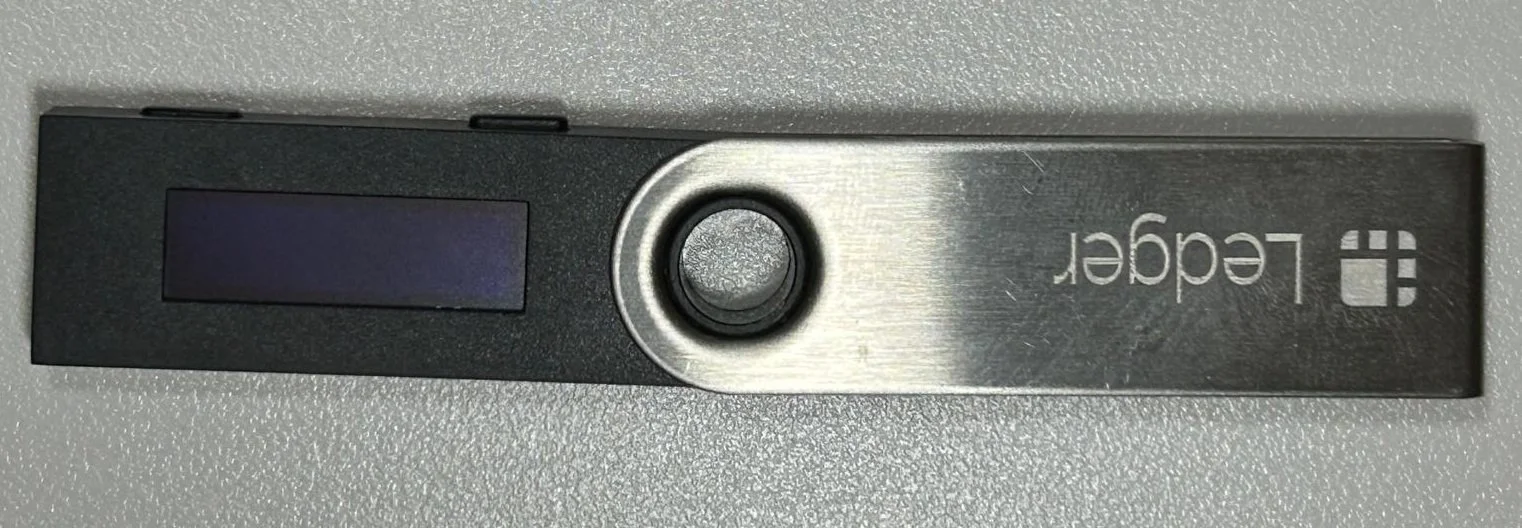When a Button Fails: Lessons from the Ledger Nano S
As someone with over three decades in the field of computer science and a PhD to show for it, I’ve come to appreciate how the smallest components can lead to the biggest failures. Nowhere is that more true than with cryptocurrency hardware wallets like the Ledger Nano series. These small devices, entrusted with securing tens or even hundreds of thousands of dollars in crypto assets, are only as reliable as their weakest physical point. And unfortunately, that weak point is often the buttons.
(note permanently pressed button on the left)
The Problem with Broken Buttons
The Ledger Nano uses physical buttons for core functionality: confirming transactions, entering your PIN, navigating menus. If either button becomes unresponsive (for example due to wear, moisture, dust, or mechanical stress) then you're locked out. Not figuratively, but literally locked out of your funds. The device becomes a high-tech paperweight.
If you have your 24-word recovery phrase safely stored, the situation is inconvenient but recoverable. You can restore your wallet to a new device and regain access. In many cases though, users either lose that phrase, write it down incorrectly, or never fully complete the backup process. In those cases, the broken button doesn’t just represent a nuisance, it simply represents the end of the road.
Real Cases, Real Stakes
At Praefortis we have dealt with dozens of cases involving broken buttons on Ledger Nanos. These were not hypothetical scenarios. These were real people, some in panic, others in quiet resignation, who thought they had lost access to their coins forever. In almost every case, the solution required precision microelectronics work: replacing the failed button, reflowing a fractured solder joint, or rebuilding the contact pads.
Most importantly, our team knew how to do this without disturbing the internal memory of the secure element chip. That distinction matters. One wrong move and even the seed phrase stored in volatile memory could be erased. These are not general consumer electronics repairs, they are surgical recoveries with no margin for error.
Why DIY Repairs Are Risky
It might be tempting to open up your Ledger and attempt a repair. I would strongly caution against it. The secure element is intentionally resistant to probing or modification. Any improper current, static discharge, or mechanical slip can permanently disable the chip. Once that happens, not even Ledger themselves can help.
Our lab is equipped with the necessary rework stations, microscopes, and anti-static equipment (and just as importantly, the experience) to perform these repairs safely. When someone’s life savings are at stake, the job must be done right the first time.
Tools Required for DIY Repairs (and Why We Still Don’t Recommend It!)
If you’re determined to attempt the repair yourself — and understand the risks — here is a basic list of what you will need:
Antistatic workbench and grounding strap – to prevent ESD from damaging the secure element.
Precision screwdriver set – Ledger devices use small, delicate screws.
Plastic pry tools – to open the case without damaging the enclosure.
Hot air rework station – to remove and replace surface-mount button components.
Soldering iron with a fine tip – for working on the tiny pads and joints inside the Ledger.
Flux and solder wick – to clean up and rework solder joints.
Magnification (optical microscope or jeweler's loupe) – the pitch of components is too fine for the naked eye.
Multimeter with continuity test – to verify electrical connections and ensure no bridges exist.
Even with all the right equipment, repairing a Ledger Nano is not a beginner’s electronics project. The tolerances are tight, the secure element is unforgiving, and any mistake can cost you everything. I’ve spent a career managing high-reliability computing systems, and I would not personally recommend this type of repair without specialized experience in micro-soldering and secure device handling.
Why Trust Praefortis?
Because we’ve done this, successfully, many times before. We treat each wallet as if it contains a family’s future, because sometimes it does. Our lab has the equipment, protocols, and most importantly, the judgment to carry out this type of delicate work safely. And if the repair cannot be done, we tell you the truth.
Conclusion
The irony of a hardware wallet is that it combines cutting-edge cryptography with everyday physical components. And when one of those components, as simple as a single button, fails then it puts the whole system in jeopardy. If you’re facing this issue and do not have your recovery phrase, know that you are not out of options. Praefortis has restored functionality to dozens of Ledger Nanos with failed buttons and helped users regain access to their digital assets.
If your Ledger Nano won’t respond, don’t throw it out. Contact us instead. We’ve been there before. And we know how to bring your wallet back to life.


